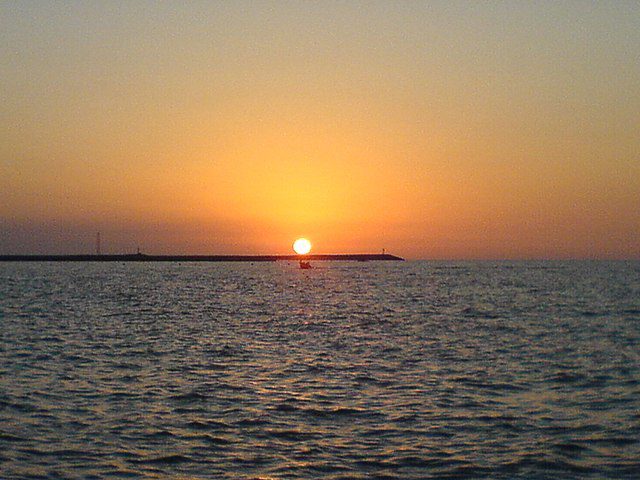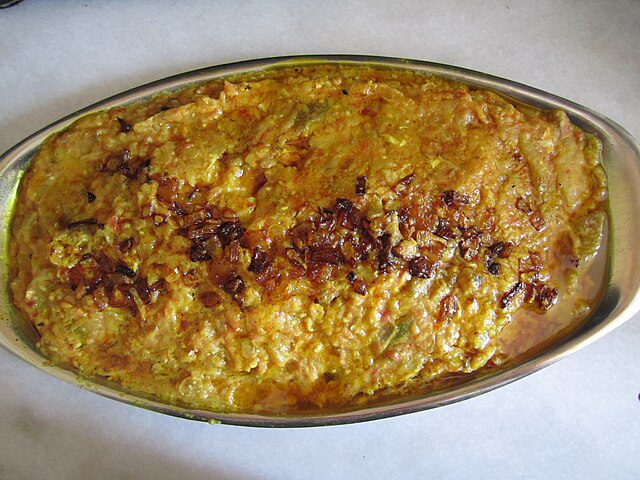Table of Contents
The Caspian Sea, also called Darya-ye Khazar in Iran, is the largest lake in the world. Unlike other seas, it doesn’t connect to any ocean, making it an intriguing mystery in the heart of nature. This extraordinary water body transforms the northern part of Iran into a bustling hub for tourists. Every year, millions of people flock to its shores, especially in the provinces of Gilan, Mazandaran, and Golestan, to experience its beauty firsthand.
The charm of the sea lies not just in its size but in the stories it holds. People come here to enjoy the simplicity of gazing at its endless waters and to learn about the rich history of the surrounding areas. Whether you’re interested in the past or simply want to unwind amidst breathtaking views, the sea invites you to explore its secrets and embrace the beauty of nature in its purest form.
History of the Caspian Sea
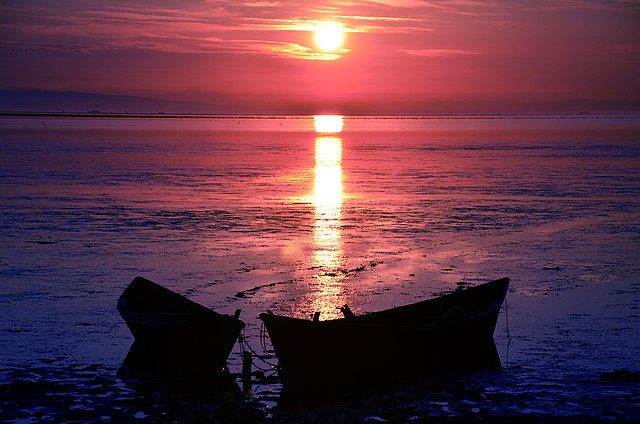
Centuries ago, the Caspian Sea emerged as a silent witness to Earth’s ancient history. It’s not merely a body of water; it’s a relic of a bygone era—the remnants of the ancient Paratethys Sea, a part of the vast Tethys Ocean that existed between 50 to 60 million years ago. During this ancient epoch, the Tethys Ocean stretched its arms, connecting the far-reaching Atlantic and Pacific oceans, painting a picture of a vastly different world.
This fascinating revelation, shared by WorldLakes.org, unveils the sea’s deep-rooted past. Imagine, a time when the world’s oceans were interconnected, and the sea was a crucial part of this grand aquatic network. Today, it stands as a testament to Earth’s ever-changing landscapes, reminding us of the immense geological transformations that have shaped our planet over millions of years.
The Caspian Sea: Nature’s Grand Inland Marvel
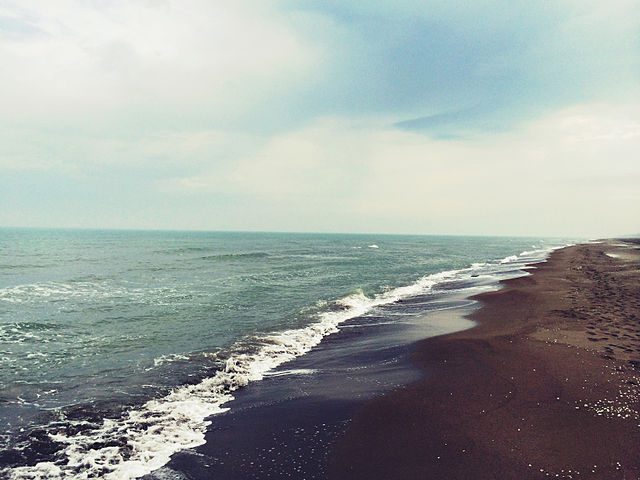
Spread across a vast expanse of over 600 thousand square kilometers, Darya-ye Khazar is a colossal water body that defies the typical definitions of a sea. Instead, it stands proudly as the largest inland body of water on Earth. This immense stretch of water is embraced by the lands of Iran, Azerbaijan, Russia, Turkmenistan, and Kazakhstan, creating a unique tapestry of cultures around its shores.
In Iran alone, the northern coastal cities stretch over 740 kilometers along the Caspian Sea, showcasing the sheer magnitude of this awe-inspiring natural wonder. Despite its size, the sea harbors a surprising secret: its water, while vast, is semi-salty, creating a distinctive environment for the myriad of marine life that calls it home. One notable absence, however, is the shark—an absence that grants visitors the freedom to safely swim in its depths, provided they stick to designated areas, of course. So, within the confines of this incredible inland marvel, nature invites you to explore, discover, and embrace the wonders of its unique aquatic realm.
Gilan Province
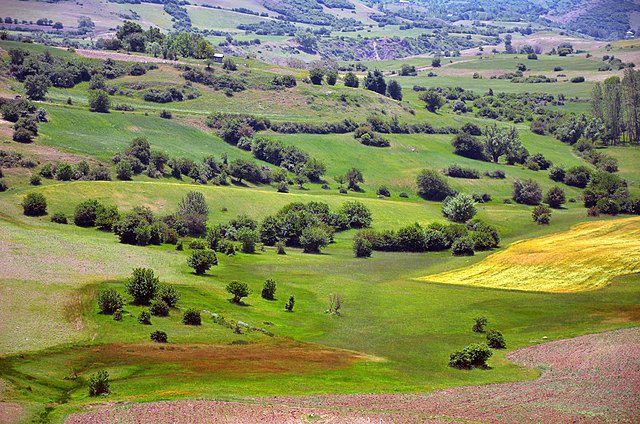
City of Rasht, the vibrant heart of Gilan province, is renowned for its delicious and colorful cuisine, making it a haven for food enthusiasts. Known as the city of tasty delights, Rasht’s culinary offerings reflect the province’s rich cultural heritage, inviting both locals and visitors to savor its unique flavors.
But Rasht isn’t the only treasure in Gilan. The province boasts a coastline adorned with stunning destinations. From the captivating shores of Bandar-e Anzali to the tranquil beauty of Chaf, Chamkhaleh, Astara, Rudsar, and Kalachai, Chaboksar, Gilan’s coasts offer more than just scenic beauty. These places are thoughtfully equipped with facilities, ensuring travelers a memorable experience. Each coastal town, with its distinct charm, welcomes explorers to immerse themselves in Gilan’s natural wonders while enjoying the warmth of its hospitality.
Mazandaran Province
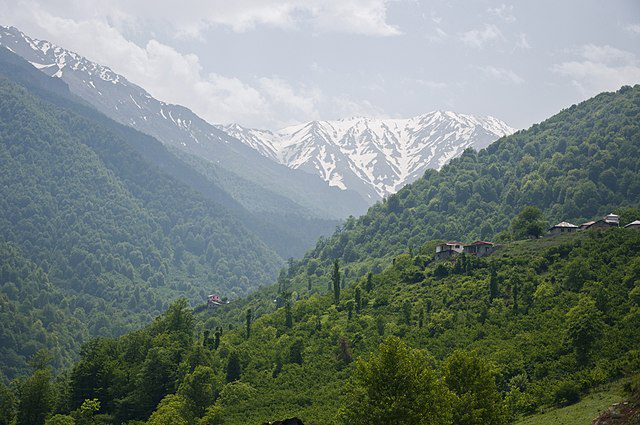
Nestled by the Darya-ye Khazar, Mazandaran Province is a treasure trove of coastal delights. It boasts some of the best facilities along the shoreline, making it a sought-after destination for sea enthusiasts. Among its gems, Ramsar stands out, not just for its beach pleasures, but also for the allure of palaces, thrilling adventures, and scenic wonders that await visitors.
As you venture beyond Ramsar, Mazandaran reveals a host of coastal marvels. Namak Abrud, Tuska Sara, Salman Shar (Motel Ghoo), Si Sara, Noshahr, Mahmoud Abad, Fereydoun Kenar, Amol, Babol, Babol Sar, and Noor are just a few of the inviting spots dotting the coastline. Here, the sea’s melody harmonizes with warm hospitality, offering a perfect blend of relaxation, excitement, and cultural exploration. Mazandaran invites you to indulge in the simple joys of sun, sand, and sea, making your stay a memorable coastal retreat.
Golestan Province
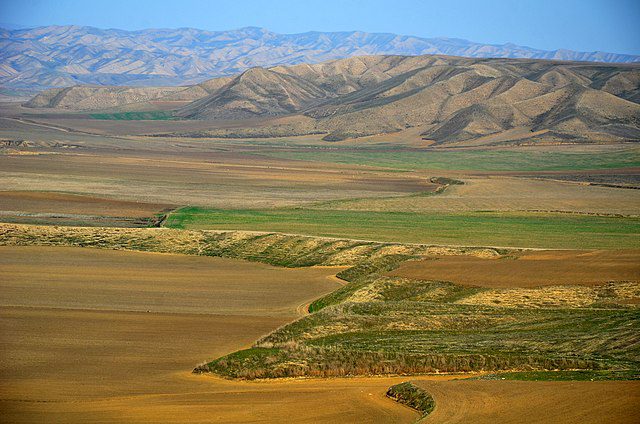
Despite having fewer coastal cities than its neighboring states, Golestan province is a tranquil paradise waiting to be explored. Here, you can witness the splendid natural landscapes of Iran, from awe-inspiring coasts to lush forests, all in one place.
Golestan’s allure lies in its simplicity. Along its coastline, the Gorgan Coast captures the essence of the sea and land blending harmoniously. Moreover, destinations like Bandar-e Turkaman, Bandar-e Gaz, and Gamishan showcase the province’s unspoiled beauty. These places, though few, showcase the untouched splendor of Iran’s coastal scenery, inviting travelers to immerse themselves in the peaceful embrace of nature. In Golestan, the beauty of Iran’s landscapes shines brightly, making it a perfect retreat for those seeking the serenity of nature.
How to Get to the Caspian Sea
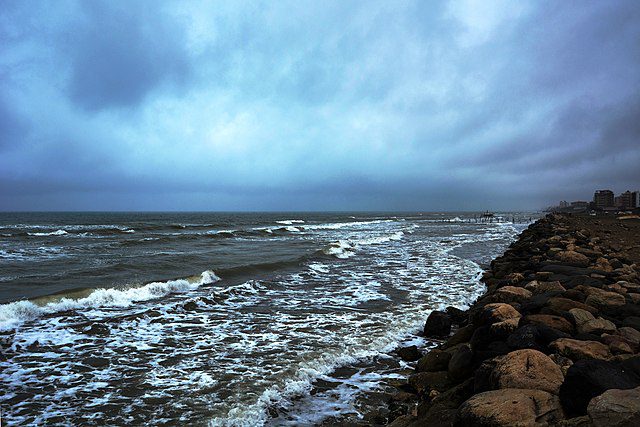
Planning a trip to Darya-ye Khazar? Luckily, there are convenient travel routes to this stunning destination, offering a variety of transportation options tailored to your preferences and needs.
By Car
If you’re planning a road trip, you can drive to the Caspian Sea by heading to one of these three provinces: Gilan, Mazandaran, or Golestan. The roads are well-connected, making it a convenient and scenic journey.
By Bus
For a budget-friendly option, buses are available from major cities like Tehran. You can easily buy tickets to northern coastal cities such as Rasht, Bandar-e Anzali, Amol, and Babol. Buses offer a comfortable way to travel, allowing you to relax while you reach your destination.
By Plane
If you prefer a faster mode of transportation, flights operate from Mehrabad Airport to key coastal cities in the north like Sari, Rasht, and Gorgan. Flying saves time and is ideal for those looking for a quick and efficient travel option.
By Train
Trains are another convenient way to travel to the northern coastal cities from major cities like Tehran, Isfahan, and Shiraz. Train journeys provide a relaxed and enjoyable experience, allowing you to soak in the scenic beauty of the surroundings as you make your way to the sea.
Where to Eat near the Caspian Sea
In the northern regions of Iran, you’ll find a treasure trove of culinary delights awaiting your taste buds. Discovering a delightful place to dine is a breeze in this food-loving part of the country. Akbar Joje, one of the well-known restaurant chains in the area, stands out as a favorite choice, ensuring you’ll relish every bite of your meal.
For our vegetarian friends, worry not; the northern regions of Iran boast a plethora of vegetarian options deeply embedded in traditional recipes. While signs reading “Vegetarian Restaurant” might not be commonplace, fear not. Just ask for dishes like Baghal-e Ghatogh and Mirza Ghasemi, and you’ll be treated to a feast of flavors without meat. Along the Caspian coasts, culinary adventures await, promising a diverse dining experience where both meat lovers and vegetarians can indulge in the rich tapestry of Iranian cuisine.
Where to Stay near the Caspian Sea
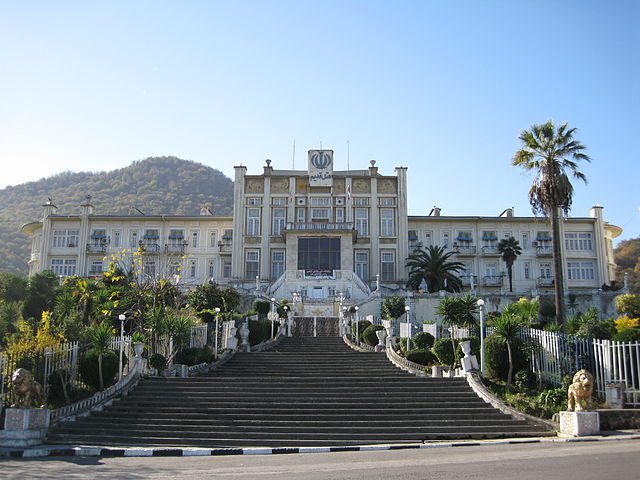
When it comes to finding a place to stay, you have plenty of options to suit your needs and budget. There are luxurious 5-star hotels such as Kadoos Grand Hotel, Chaloos Parsian Azadi Hotel, Chaloos Venus Plus Hotel, Mahmood Abad Morvarid Khalij-e Fars Hotel, and Motel Ghoo Lilium Hotel, promising a lavish experience.
If you’re looking for a more budget-friendly stay, there are comfortable choices like Chaloos Narin Hotel, Rasht Ghadir Hotel, Mahmood Abad Mahan Hotel Apartment, and Rasht Ordibehesht Hotel. These accommodations provide a cozy atmosphere and essential amenities, ensuring a pleasant stay without straining your wallet. With a variety of options available, you can find the perfect place to relax and enjoy your time by this sea.
Other Attractions near the Caspian Sea
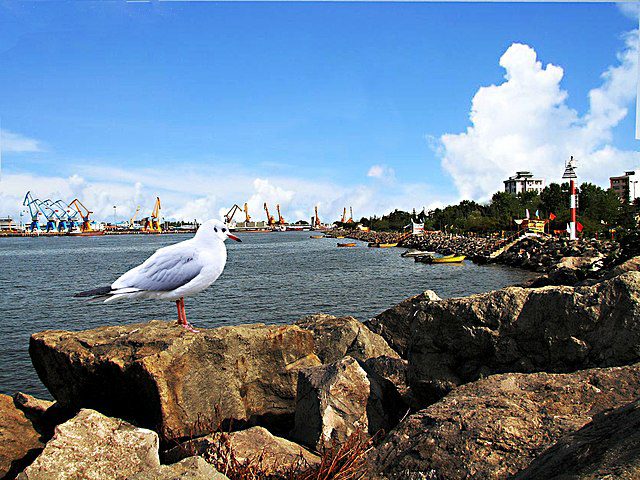
When you visit here, you’re not just limited to the coastal charm. There’s a world of excitement waiting in the neighboring provinces. For example, in Gilan province, where the Caspian Sea’s beauty unfolds, you can also explore Rasht Shahrdari Square, a lively local spot. Besides, there’s Bandar-e Anzali, offering breathtaking views, and the delightful towns of Fuman, Masouleh, Masal, Deilaman, Anzali Lagoon, and Lahijan, each with its own unique cultural treasures.
So, while you soak in this sea’s splendor, remember that your adventure extends beyond the shoreline. Dive into these nearby cities, and you’ll discover a rich blend of history, local traditions, and natural wonders, making your journey through Iran’s coastal regions truly unforgettable.
FAQs about the Caspian Sea
Q1: What is the Caspian Sea and why is it special?
A1: The Caspian Sea is a huge lake in Iran, unique because it’s not connected to any ocean. It has a long history, dating back millions of years.
Q2: Why is the Caspian Sea historically important?
A2: The Caspian Sea is a leftover from the ancient Paratethys Sea, part of a big ocean that existed a very long time ago. It shows how our Earth has changed over millions of years.
Q3: Which provinces in Iran are near the Caspian Sea and what can tourists do there?
A3: The Caspian Sea is close to the Gilan, Mazandaran, and Golestan provinces in Iran. Gilan has lively cities like Rasht and beautiful places like Bandar-e Anzali. Mazandaran has spots like Ramsar and Noshahr, perfect for both relaxation and exploring. Golestan, although having fewer cities, offers natural beauty in places like Bandar-e Turkaman.
Q4: How can people travel to the Caspian Sea from big cities in Iran?
A4: Travelers can go to the Caspian Sea by car, bus, plane, or train. Roads are good for driving. Buses run from cities like Tehran to coastal places like Rasht. Flights go from Mehrabad Airport to coastal cities, providing a quick option. Trains offer a comfortable journey from major cities like Tehran, Isfahan, and Shiraz.
Q5: What food and places to stay are there near the Caspian Sea?
A5: Near the Caspian Sea, you can eat at places like Akbar Joje and enjoy local dishes. For staying, there are fancy hotels like Kadoos Grand Hotel and budget-friendly options like Chaloos Narin Hotel, giving travelers various choices.
Q6: Why is the Caspian Sea not a real sea?
A6: The Caspian Sea will be treated differently in the law. This is because of its unique geography and features. It’s a body of water inside land, not directly connected to the world’s oceans, so it’s not classified as a sea.
Q7: Is the Caspian Sea technically a lake?
A7: On August 12th, the leaders of the five Caspian countries gathered in the Kazakh city of Aqtau to decide the sea’s status. The resulting agreement, the Convention on the Legal Status of the Caspian Sea, was a middle ground. Despite its title, it states that the Caspian is neither a lake nor a sea.
Q8: Why is it called the Caspian Sea and not lake?
A8: Is it a lake or a sea? Even though it’s called the Caspian Sea, it can be called either a lake or a sea. Kukral and many scholars call it a lake. Despite its large size and salty water, it has features typical of lakes, leading to historical classification as a sea, but it shares traits with lakes.
Q9: Is the Caspian Sea drying up?
A9: Why has the water level in the largest inland body of water decreased significantly? The water level in the Caspian Sea has been dropping since 2006 and reached a critical point in 2022.
Q10: Can you swim in the Caspian Sea?
A10: There are many wonderful parts for swimming and relaxation. Some popular spots include Bilgah Beach Hotel, Amburan Beach Club, Mambo Beach Club, and Sea Breeze Resort. Bilgah Beach Hotel and Amburan Beach Club are situated in Bilgah settlement, only 44 kilometers away from Baku city.
Last Words: Explore the Caspian Sea with Customized Tours in Iran
The Caspian Sea, the world’s largest lake, is a unique natural wonder as it doesn’t connect to any ocean. Located in Iran, it attracts millions of tourists to its shores in provinces like Gilan, Mazandaran, and Golestan. People come to admire its vast waters, learn about local history, and unwind amidst stunning views, making it a captivating destination.
To truly savor the beauty of this unique destination, consider embarking on a journey tailored just for you. Customized tours offer a personalized touch, ensuring you experience the Caspian Sea like never before. At To Iran Tour, we specialize in crafting unforgettable experiences in Iran.
What sets us apart at To Iran Tour is our commitment to understanding your preferences. We go the extra mile to design travel packages that align with your interests, whether you’re a history enthusiast, a nature lover, or a culinary adventurer. Our goal is to transform your trip into a seamless, tailored experience that reflects your unique tastes.

